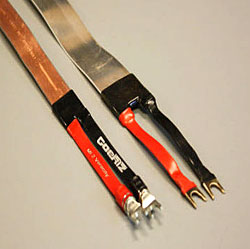| Columns Retired Columns & Blogs |
.."We brought the cable over to Dick Sequerra, who loved it. He A/B'd them with what he was using, and he made a lot of measurements to illustrate the differences"
and just WHERE are the measurements? I see NOTHING as usual when Stereophile talks about cables. LOTS of fancy words to impress the gullible but ZERO measurements. Claims of A/B ing but no details at all of how they were done, SBT DBT or just a biased sighted test?
*sigh* nothing new here just the usual BS.
 Jonathan Scull: How long have you been making cables, Ulrik?
Jonathan Scull: How long have you been making cables, Ulrik?







































